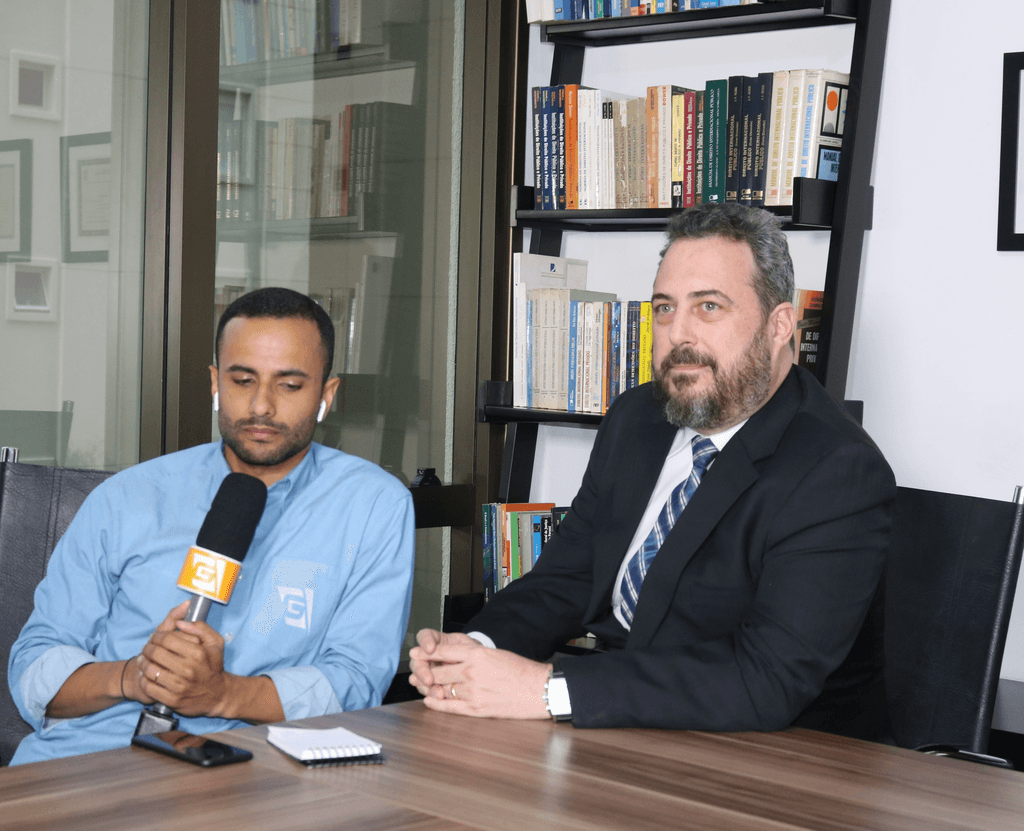Latest Statistics on Child Abdution
Latest Statistics on Child Abdution
Updates
Updates
×
25 de fevereiro de 2024
25 de fevereiro de 2024




In September 2023, Professor Nigel Lowe and Victoria Stephens, in association with the Permanent Bureau of the Hague Conference on Private International Law, published an updated study that offers an in-depth analysis of applications made in 2021 under the 1980 Child Abduction Convention. This report brought important information that was used in the discussions at the Eighth Meeting of the Special Commission, which is dedicated to evaluating the practical implementation of the 1980 Child Abduction and 1996 Child Protection Conventions.
The study, primarily available in English, was prepared with the primary objective of providing statistical analysis, following previous studies conducted in 2015, 2008, 2003, and 1999, thereby offering a longitudinal perspective on the trends and patterns in child abduction cases worldwide.
The report encompasses data collected from 71 States, covering a wide jurisdictional spectrum of the applications made under the 1980 Convention in 2021.
This extensive data collection was made possible thanks to the collaborative efforts of the Central Authorities of the participating Contracting States, along with voluntary contributions from nations including the People’s Republic of China, Germany, the Philippines, and the United Kingdom, as well as organizations like the International Centre for Missing and Exploited Children (ICMEC) and the US Friends of the Hague Conference Foundation.
This study is not just a compilation of numbers but a detailed analysis of various facets of child abduction cases. It includes insights into return and access applications, the demographics of the taking persons, the impacted children, the outcomes of these applications, and the timelines involved. Moreover, it provides a comparative perspective between return and access applications, offering a nuanced understanding of the complexities involved in each case.
The statistical study not only reflects the current scenario of child abduction but also plays a crucial role in shaping future policies and practices under the auspices of the 1980 Child Abduction Convention. As we delve into the findings of this report, it becomes evident that it is an indispensable tool for policymakers, legal practitioners, and researchers alike in understanding and addressing the multifaceted challenges of international child abduction.
The study highlights significant trends in child abduction cases in 2021. It notes an increase in mothers as the taking persons in abductions, reaching 75%, up from previous years. The majority of mothers were also primarily the child’s carers. Fathers accounted for 23%, with the rest being grandparents or other relatives.
In these cases, an average of 1.3 children were involved per application, with most applications (74%) involving just one child. The average age of these children was 6.7 years.
Interestingly, the overall rate of child return decreased to 39%, a drop from previous years, and was comprised of both voluntary (16%) and judicial (23%) returns.
The study also found that 38% of return applications ended up in court, slightly lower than in previous years, with 59% resulting in a judicial return order, a decrease from past studies. Additionally, 281 return applications ended in judicial refusal, with the most common ground for refusal being Article 13(1)(b).
The time taken to resolve these applications has increased, with an average of 207 days to reach a final outcome, longer than in previous years. The average time for a judicial return decision was 196 days, and for a judicial refusal, it was 268 days. Voluntary returns took an average of 129 days.
Lastly, 42% of return applications that went to court-involved an appeal, higher than in previous years, with 81% maintaining the same outcome as the initial decision. This section of the study also discusses the potential impact of the COVID-19 pandemic on these timings.
The study’s extensive analysis of the 2021 data on international child abduction cases presents crucial developments in the field. The observed rise in cases involving mothers as the abducting parent and the decline in overall child return rates signal a shift in the patterns of these abductions. These trends point towards a deeper understanding of the evolving nature of family disputes and the challenges faced in the application of the 1980 Child Abduction Convention.
The findings on the lengthening of legal processes for resolving abduction cases, especially the increased time for judicial decisions and refusals, highlight an area of growing concern. This aspect calls for a focused effort to streamline and expedite procedures to better serve the needs of the affected children and families.
This study also brings into focus the critical role of international collaboration in addressing the complexities of child abduction cases. The need for enhanced cooperation between Contracting States, legal professionals, and international organizations is more pronounced than ever. This collaborative approach is essential for refining the application of the Convention and ensuring the protection of children in these distressing situations.
The significant role of this study extends beyond just providing statistics; it serves as a foundational resource for ongoing legal and policy developments. It offers a comprehensive perspective necessary for formulating strategies aimed at preventing child abduction and improving response mechanisms.
In light of these findings, the study by Professor Nigel Lowe and Victoria Stephens, in association with the Permanent Bureau of the Hague Conference on Private International Law, emerges as a pivotal contribution to the field of international child abduction. It not only informs but also guides future efforts in safeguarding children’s rights and welfare amid the complexities of international family law.
The Study: https://assets.hcch.net/docs/fcb00f53-ba49-4f62-ae79-0f0724b59093.pdf
In September 2023, Professor Nigel Lowe and Victoria Stephens, in association with the Permanent Bureau of the Hague Conference on Private International Law, published an updated study that offers an in-depth analysis of applications made in 2021 under the 1980 Child Abduction Convention. This report brought important information that was used in the discussions at the Eighth Meeting of the Special Commission, which is dedicated to evaluating the practical implementation of the 1980 Child Abduction and 1996 Child Protection Conventions.
The study, primarily available in English, was prepared with the primary objective of providing statistical analysis, following previous studies conducted in 2015, 2008, 2003, and 1999, thereby offering a longitudinal perspective on the trends and patterns in child abduction cases worldwide.
The report encompasses data collected from 71 States, covering a wide jurisdictional spectrum of the applications made under the 1980 Convention in 2021.
This extensive data collection was made possible thanks to the collaborative efforts of the Central Authorities of the participating Contracting States, along with voluntary contributions from nations including the People’s Republic of China, Germany, the Philippines, and the United Kingdom, as well as organizations like the International Centre for Missing and Exploited Children (ICMEC) and the US Friends of the Hague Conference Foundation.
This study is not just a compilation of numbers but a detailed analysis of various facets of child abduction cases. It includes insights into return and access applications, the demographics of the taking persons, the impacted children, the outcomes of these applications, and the timelines involved. Moreover, it provides a comparative perspective between return and access applications, offering a nuanced understanding of the complexities involved in each case.
The statistical study not only reflects the current scenario of child abduction but also plays a crucial role in shaping future policies and practices under the auspices of the 1980 Child Abduction Convention. As we delve into the findings of this report, it becomes evident that it is an indispensable tool for policymakers, legal practitioners, and researchers alike in understanding and addressing the multifaceted challenges of international child abduction.
The study highlights significant trends in child abduction cases in 2021. It notes an increase in mothers as the taking persons in abductions, reaching 75%, up from previous years. The majority of mothers were also primarily the child’s carers. Fathers accounted for 23%, with the rest being grandparents or other relatives.
In these cases, an average of 1.3 children were involved per application, with most applications (74%) involving just one child. The average age of these children was 6.7 years.
Interestingly, the overall rate of child return decreased to 39%, a drop from previous years, and was comprised of both voluntary (16%) and judicial (23%) returns.
The study also found that 38% of return applications ended up in court, slightly lower than in previous years, with 59% resulting in a judicial return order, a decrease from past studies. Additionally, 281 return applications ended in judicial refusal, with the most common ground for refusal being Article 13(1)(b).
The time taken to resolve these applications has increased, with an average of 207 days to reach a final outcome, longer than in previous years. The average time for a judicial return decision was 196 days, and for a judicial refusal, it was 268 days. Voluntary returns took an average of 129 days.
Lastly, 42% of return applications that went to court-involved an appeal, higher than in previous years, with 81% maintaining the same outcome as the initial decision. This section of the study also discusses the potential impact of the COVID-19 pandemic on these timings.
The study’s extensive analysis of the 2021 data on international child abduction cases presents crucial developments in the field. The observed rise in cases involving mothers as the abducting parent and the decline in overall child return rates signal a shift in the patterns of these abductions. These trends point towards a deeper understanding of the evolving nature of family disputes and the challenges faced in the application of the 1980 Child Abduction Convention.
The findings on the lengthening of legal processes for resolving abduction cases, especially the increased time for judicial decisions and refusals, highlight an area of growing concern. This aspect calls for a focused effort to streamline and expedite procedures to better serve the needs of the affected children and families.
This study also brings into focus the critical role of international collaboration in addressing the complexities of child abduction cases. The need for enhanced cooperation between Contracting States, legal professionals, and international organizations is more pronounced than ever. This collaborative approach is essential for refining the application of the Convention and ensuring the protection of children in these distressing situations.
The significant role of this study extends beyond just providing statistics; it serves as a foundational resource for ongoing legal and policy developments. It offers a comprehensive perspective necessary for formulating strategies aimed at preventing child abduction and improving response mechanisms.
In light of these findings, the study by Professor Nigel Lowe and Victoria Stephens, in association with the Permanent Bureau of the Hague Conference on Private International Law, emerges as a pivotal contribution to the field of international child abduction. It not only informs but also guides future efforts in safeguarding children’s rights and welfare amid the complexities of international family law.
The Study: https://assets.hcch.net/docs/fcb00f53-ba49-4f62-ae79-0f0724b59093.pdf
In September 2023, Professor Nigel Lowe and Victoria Stephens, in association with the Permanent Bureau of the Hague Conference on Private International Law, published an updated study that offers an in-depth analysis of applications made in 2021 under the 1980 Child Abduction Convention. This report brought important information that was used in the discussions at the Eighth Meeting of the Special Commission, which is dedicated to evaluating the practical implementation of the 1980 Child Abduction and 1996 Child Protection Conventions.
The study, primarily available in English, was prepared with the primary objective of providing statistical analysis, following previous studies conducted in 2015, 2008, 2003, and 1999, thereby offering a longitudinal perspective on the trends and patterns in child abduction cases worldwide.
The report encompasses data collected from 71 States, covering a wide jurisdictional spectrum of the applications made under the 1980 Convention in 2021.
This extensive data collection was made possible thanks to the collaborative efforts of the Central Authorities of the participating Contracting States, along with voluntary contributions from nations including the People’s Republic of China, Germany, the Philippines, and the United Kingdom, as well as organizations like the International Centre for Missing and Exploited Children (ICMEC) and the US Friends of the Hague Conference Foundation.
This study is not just a compilation of numbers but a detailed analysis of various facets of child abduction cases. It includes insights into return and access applications, the demographics of the taking persons, the impacted children, the outcomes of these applications, and the timelines involved. Moreover, it provides a comparative perspective between return and access applications, offering a nuanced understanding of the complexities involved in each case.
The statistical study not only reflects the current scenario of child abduction but also plays a crucial role in shaping future policies and practices under the auspices of the 1980 Child Abduction Convention. As we delve into the findings of this report, it becomes evident that it is an indispensable tool for policymakers, legal practitioners, and researchers alike in understanding and addressing the multifaceted challenges of international child abduction.
The study highlights significant trends in child abduction cases in 2021. It notes an increase in mothers as the taking persons in abductions, reaching 75%, up from previous years. The majority of mothers were also primarily the child’s carers. Fathers accounted for 23%, with the rest being grandparents or other relatives.
In these cases, an average of 1.3 children were involved per application, with most applications (74%) involving just one child. The average age of these children was 6.7 years.
Interestingly, the overall rate of child return decreased to 39%, a drop from previous years, and was comprised of both voluntary (16%) and judicial (23%) returns.
The study also found that 38% of return applications ended up in court, slightly lower than in previous years, with 59% resulting in a judicial return order, a decrease from past studies. Additionally, 281 return applications ended in judicial refusal, with the most common ground for refusal being Article 13(1)(b).
The time taken to resolve these applications has increased, with an average of 207 days to reach a final outcome, longer than in previous years. The average time for a judicial return decision was 196 days, and for a judicial refusal, it was 268 days. Voluntary returns took an average of 129 days.
Lastly, 42% of return applications that went to court-involved an appeal, higher than in previous years, with 81% maintaining the same outcome as the initial decision. This section of the study also discusses the potential impact of the COVID-19 pandemic on these timings.
The study’s extensive analysis of the 2021 data on international child abduction cases presents crucial developments in the field. The observed rise in cases involving mothers as the abducting parent and the decline in overall child return rates signal a shift in the patterns of these abductions. These trends point towards a deeper understanding of the evolving nature of family disputes and the challenges faced in the application of the 1980 Child Abduction Convention.
The findings on the lengthening of legal processes for resolving abduction cases, especially the increased time for judicial decisions and refusals, highlight an area of growing concern. This aspect calls for a focused effort to streamline and expedite procedures to better serve the needs of the affected children and families.
This study also brings into focus the critical role of international collaboration in addressing the complexities of child abduction cases. The need for enhanced cooperation between Contracting States, legal professionals, and international organizations is more pronounced than ever. This collaborative approach is essential for refining the application of the Convention and ensuring the protection of children in these distressing situations.
The significant role of this study extends beyond just providing statistics; it serves as a foundational resource for ongoing legal and policy developments. It offers a comprehensive perspective necessary for formulating strategies aimed at preventing child abduction and improving response mechanisms.
In light of these findings, the study by Professor Nigel Lowe and Victoria Stephens, in association with the Permanent Bureau of the Hague Conference on Private International Law, emerges as a pivotal contribution to the field of international child abduction. It not only informs but also guides future efforts in safeguarding children’s rights and welfare amid the complexities of international family law.
The Study: https://assets.hcch.net/docs/fcb00f53-ba49-4f62-ae79-0f0724b59093.pdf
In September 2023, Professor Nigel Lowe and Victoria Stephens, in association with the Permanent Bureau of the Hague Conference on Private International Law, published an updated study that offers an in-depth analysis of applications made in 2021 under the 1980 Child Abduction Convention. This report brought important information that was used in the discussions at the Eighth Meeting of the Special Commission, which is dedicated to evaluating the practical implementation of the 1980 Child Abduction and 1996 Child Protection Conventions.
The study, primarily available in English, was prepared with the primary objective of providing statistical analysis, following previous studies conducted in 2015, 2008, 2003, and 1999, thereby offering a longitudinal perspective on the trends and patterns in child abduction cases worldwide.
The report encompasses data collected from 71 States, covering a wide jurisdictional spectrum of the applications made under the 1980 Convention in 2021.
This extensive data collection was made possible thanks to the collaborative efforts of the Central Authorities of the participating Contracting States, along with voluntary contributions from nations including the People’s Republic of China, Germany, the Philippines, and the United Kingdom, as well as organizations like the International Centre for Missing and Exploited Children (ICMEC) and the US Friends of the Hague Conference Foundation.
This study is not just a compilation of numbers but a detailed analysis of various facets of child abduction cases. It includes insights into return and access applications, the demographics of the taking persons, the impacted children, the outcomes of these applications, and the timelines involved. Moreover, it provides a comparative perspective between return and access applications, offering a nuanced understanding of the complexities involved in each case.
The statistical study not only reflects the current scenario of child abduction but also plays a crucial role in shaping future policies and practices under the auspices of the 1980 Child Abduction Convention. As we delve into the findings of this report, it becomes evident that it is an indispensable tool for policymakers, legal practitioners, and researchers alike in understanding and addressing the multifaceted challenges of international child abduction.
The study highlights significant trends in child abduction cases in 2021. It notes an increase in mothers as the taking persons in abductions, reaching 75%, up from previous years. The majority of mothers were also primarily the child’s carers. Fathers accounted for 23%, with the rest being grandparents or other relatives.
In these cases, an average of 1.3 children were involved per application, with most applications (74%) involving just one child. The average age of these children was 6.7 years.
Interestingly, the overall rate of child return decreased to 39%, a drop from previous years, and was comprised of both voluntary (16%) and judicial (23%) returns.
The study also found that 38% of return applications ended up in court, slightly lower than in previous years, with 59% resulting in a judicial return order, a decrease from past studies. Additionally, 281 return applications ended in judicial refusal, with the most common ground for refusal being Article 13(1)(b).
The time taken to resolve these applications has increased, with an average of 207 days to reach a final outcome, longer than in previous years. The average time for a judicial return decision was 196 days, and for a judicial refusal, it was 268 days. Voluntary returns took an average of 129 days.
Lastly, 42% of return applications that went to court-involved an appeal, higher than in previous years, with 81% maintaining the same outcome as the initial decision. This section of the study also discusses the potential impact of the COVID-19 pandemic on these timings.
The study’s extensive analysis of the 2021 data on international child abduction cases presents crucial developments in the field. The observed rise in cases involving mothers as the abducting parent and the decline in overall child return rates signal a shift in the patterns of these abductions. These trends point towards a deeper understanding of the evolving nature of family disputes and the challenges faced in the application of the 1980 Child Abduction Convention.
The findings on the lengthening of legal processes for resolving abduction cases, especially the increased time for judicial decisions and refusals, highlight an area of growing concern. This aspect calls for a focused effort to streamline and expedite procedures to better serve the needs of the affected children and families.
This study also brings into focus the critical role of international collaboration in addressing the complexities of child abduction cases. The need for enhanced cooperation between Contracting States, legal professionals, and international organizations is more pronounced than ever. This collaborative approach is essential for refining the application of the Convention and ensuring the protection of children in these distressing situations.
The significant role of this study extends beyond just providing statistics; it serves as a foundational resource for ongoing legal and policy developments. It offers a comprehensive perspective necessary for formulating strategies aimed at preventing child abduction and improving response mechanisms.
In light of these findings, the study by Professor Nigel Lowe and Victoria Stephens, in association with the Permanent Bureau of the Hague Conference on Private International Law, emerges as a pivotal contribution to the field of international child abduction. It not only informs but also guides future efforts in safeguarding children’s rights and welfare amid the complexities of international family law.
The Study: https://assets.hcch.net/docs/fcb00f53-ba49-4f62-ae79-0f0724b59093.pdf
Veja também

Father´s Rights in International Law
Updates
×
1 de nov. de 2024

Father´s Rights in International Law
Updates
×
1 de nov. de 2024

Father´s Rights in International Law
Updates
×
1 de nov. de 2024

How to Retain a Lawyer in Brazil
Updates
×
8 de abr. de 2024

How to Retain a Lawyer in Brazil
Updates
×
8 de abr. de 2024

How to Retain a Lawyer in Brazil
Updates
×
8 de abr. de 2024

Hague Child Abduction in Brazil
Updates
×
25 de nov. de 2023

Hague Child Abduction in Brazil
Updates
×
25 de nov. de 2023

Hague Child Abduction in Brazil
Updates
×
25 de nov. de 2023

Brazilian Law Manual
Updates
×
25 de out. de 2023

Brazilian Law Manual
Updates
×
25 de out. de 2023

Brazilian Law Manual
Updates
×
25 de out. de 2023

Father´s Rights in International Law
Updates
×
1 de nov. de 2024

How to Retain a Lawyer in Brazil
Updates
×
8 de abr. de 2024

Hague Child Abduction in Brazil
Updates
×
25 de nov. de 2023
Visite o Blog
Visite o Blog
MF. Ejchel International Advocacy. 1996
MF. Ejchel International
Advocacy
1996
MF. Ejchel International Advocacy.
1996
MF. Ejchel International Advocacy. 1996








